The P2 visa is a nonimmigrant (temporary) visa for artists and entertainers working (individually or as part of a group) under a reciprocal exchange program that allows the temporary exchange of artists and entertainers between certain U.S. organizations and foreign organizations.
The P2 visa worker can use a separate P2S visa to bring their support staff with them to the United States.
- 1.
- 2.
- 3.
- 4.
- 5.
- a.
- b.
- 6.
- 7.
- 8.
- 9.
- a.
- b.
Table of Contents
A qualified P2 visa worker must be an artist or entertainer who (1) has comparable skills to U.S. artists and the artists working under the reciprocal exchange program, (2) has the nationality of the reciprocating foreign country or is a permanent resident of the reciprocating foreign country, and (3) will be working individually or as part of a group through the government recognized reciprocal exchange program.
Currently qualified artistic reciprocal exchange programs:
- The American Federation of Musicians & The American Federation of Musicians in Canada
- Actors Equity Association of the United States & Canadian Actors Equity Association
- Actors Equity Association of the United States & British Actors Equity Association
- The Alliance of Canadian Cinema Television and Radio Artists (ACTRA) & the Screen Actor Guild – American Federation of Television and Radio Artists (SAG-AFTRA)
- International Council of Air shows & The Canadian Air Show Association
The original statutory wording for qualified persons for P2 visas can be found in 8 CFR 214.2(p)(5).
The P2 visa can be granted an initial period of stay for up to 1 year depending on how much time is required to complete the event or performance. The P2 visa workers are allowed to enter the United States 10 days before the visa start date and stay an additional 10 days after the visa end date. However, the P2 visa workers cannot work in those additional 20 days.
Renewals of the P2 visa (extensions of stay) may be granted for up to 1 year in increments depending on how long the P2 visa worker needs to finish their initial event or performance.
-eng-1024x427.jpg)
The P2 visa has three main requirements that need to be satisfied: evidence must be provided to the USCIS to show that the artist or entertainer (1) has comparable skills to U.S. artists and the artists working under the reciprocal exchange program, (2) has the nationality of the reciprocating foreign country or is a permanent resident of the reciprocating foreign country, and (3) will be working individually or as part of a group through a qualified government recognized reciprocal exchange program.
The original statutory wording for the evidentiary requirements of the P2 visas can be found in 8 CFR 214.2(p)(5)(ii).
Documents Required for the P2 Work Visa (Artist Reciprocal Exchange Program)
The evidence provided to the USCIS for the P2 visa must show:
- (A)
- The P2 visa worker will continue to work (temporarily in the United States) in the same area of expertise under the reciprocal exchange program that was used as the basis to apply for the P2 visa
The P2 work visa petition requires the person to prove that they will continue to work temporarily in the same area of expertise that was used as the basis to apply for the P2 visa after entering the United States with their approved visa.
Reciprocal Exchange Program Agreement
The reciprocal exchange program agreement that allows a temporary exchange of artists and entertainers between a U.S. organization and a foreign organization must be provided. It must be shown that the reciprocal exchange program is valid and meets the P2 visa requirements. Evidence required can include:
- Formal reciprocal exchange agreement between the U.S. and foreign organization(s)
- Statement from the U.S. sponsoring organization providing details about this reciprocal exchange
- Proof that the labor organization in the United States was involved in negotiating the reciprocal exchange agreement or that it agrees with the reciprocal exchange agreement
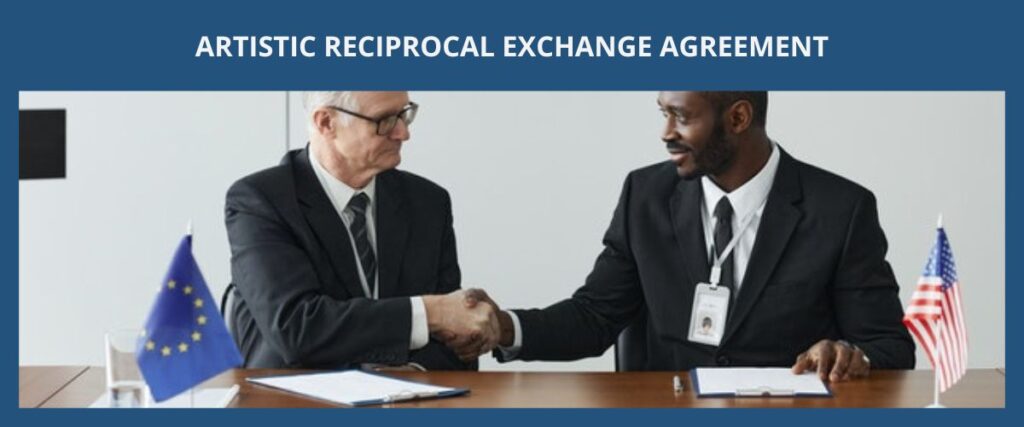
Itinerary and Nature of the event
An itinerary and an explanation of the event or activities that the P2 visa worker will be participating in must be provided. Evidence required can include:
- Itinerary that shows the dates, name(s) of the employer(s) or sponsor(s), and the location of the event.
- An explanation of the nature of the event or activities.
- The start and end dates of the event or activities.
- (B)
- The P2 visa worker has comparable skills and similar employment terms and conditions as the U.S. artists or entertainers for whom they are being exchanged under the reciprocal exchange program
The P2 work visa petition requires the person to prove that they have comparable skills and similar employment terms and conditions (e.g., length of employment, number of workers involved in the exchange) as the U.S. artists or entertainers for whom they are being exchanged under the reciprocal exchange program.
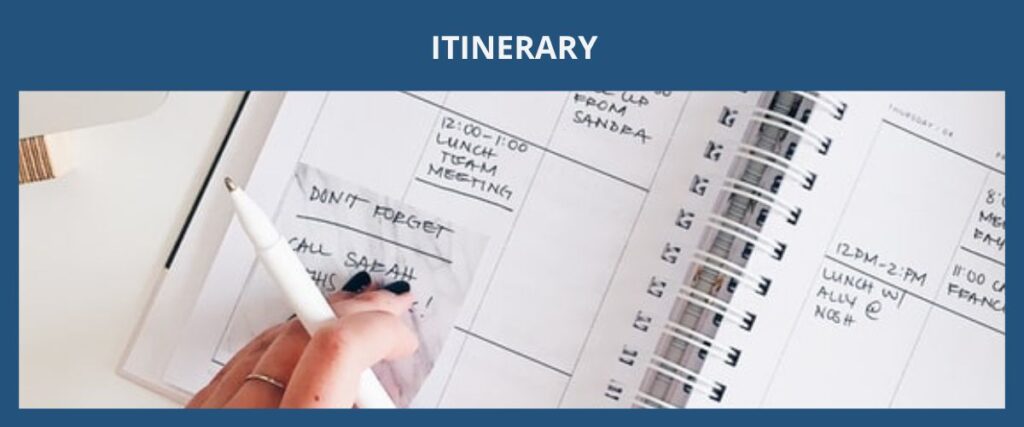
Consultation (Written Advisory Opinion)
A written advisory opinion on the P2 visa worker’s qualifications and the nature of the work must be provided. The written advisory opinion must come from the appropriate U.S. labor organization in the P2 visa worker’s field of expertise. The content of the written advisory opinion must include the P2 visa worker’s qualifications, the nature of the duties that will be performed in the United States, verification that the exchange program is viable and exists, comments on the bona fides of the reciprocal exchange program, and details on whether the exchange program meets the P2 visa requirements. Evidence required can include:
- Written advisory opinion (that includes the content required and is signed by an authorized official from the organization or group).
- Letter of no objection (when the consulting organization has no objection of the P2 visa petition being approved).
eng-2-1024x427.jpg)
The total time a P2 visa takes is consisted of the processing time for the (1) P2 visa petition (Form I-129) with the USCIS and the (2) visa application (DS-160) at a U.S. consulate or embassy overseas if the person is not already in the United States or is ineligible to do a change of status within the United States.
Factors that influence the P2 visa processing time usually include but are not limited to if there was any Request for Evidence (“RFE”) issued, and the caseload of the USCIS service center and the U.S. consulate or embassy.
Premium Processing for Form I-129 (Expedited Service)
A rough estimate for the Form I-129 petition for the P2 visa is around 3 to 4 months. However, a 15-day premium processing (Form I-907) is available for the Form I-129 part of the P2 visa petition. Premium processing is an optional expedited service where the USCIS guarantees that the case will be processed within 15 calendar days (not business days). When a notice of intent to deny (NOID) or a request for evidence (RFE) is issued, a new 15 calendar days will start when the USCIS receives a response from the applicant. If the USCIS fails to process within the time frame, a refund of the service fee will be given and the case will continue to be expedited. Please note that USCIS’s guaranteed response may be an approval notice, denial notice, notice of intent to deny (NOID), request for evidence (RFE), or open an investigation for fraud or misrepresentation.
The current premium processing fee for the P2 visa is $2500 USD and it can be requested when the original petition is submitted to the USCIS or an upgrade to premium processing can be done when the case is pending.
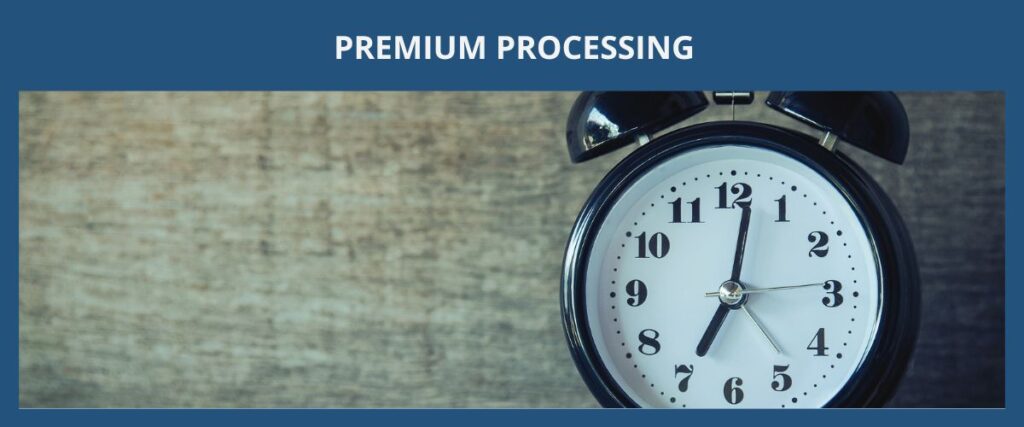
After the USCIS approves the P2 visa petition (Form I-129), the person will then need to change into their P2 visa status. There are 2 ways to change into the P2 visa status: change of status (done in the United States) and consular processing (done outside of the United States).
Change of status is usually for a person who is already in the United States with another valid nonimmigrant visa status and has maintained a lawful visa status throughout their time in the United States. On the other hand, consular processing is for a person who lives outside the United States or for a person who is ineligible to change their status in the United States due to noncompliance of U.S. immigration law (e.g., overstayed on their previous visa status, worked when they did not have valid U.S. work authorization, the visa status they used to enter the United States does not allow them to change into another type of visa status, etc.)
For a person who is residing overseas (outside the United States) or a person who is ineligible for change of status with the P2 visa petition (Form I-129), consular processing must be done to obtain the P2 visa status. Consular processing involves the person attending an in-person interview at the U.S. consulate or embassy usually in the person’s home country. In certain circumstances, a person can do consular processing in another country as a “Third Country National.”
After the interview approval at the U.S. consulate or embassy, the person would have to be admitted entry into the United States by the CBP officer at the border (usually at the airport) which means that the person would have to physically enter the United States as the final step for the P2 visa status to be activated.
For a person who is already in the United States with another valid nonimmigrant visa, there are usually two options available to obtain the P2 visa status:
(1) Change of Status: this is the more commonly chosen option where the person states that they would like to change their status without leaving the United States in their P2 visa petition (Form I-129). If the person is eligible (no violations of U.S. immigration laws), then their nonimmigrant visa status will be changed upon the approved employment start date listed in the P2 visa petition. In cases where the person’s change of status request is denied or the person needs to change it into consular processing, an application for action on an approved application or petition (Form I-824) may be required.
(2) Consular Processing: this must be chosen if a person cannot show that they have maintained lawful visa status in the United States or for any other reasons such as the person needs to travel internationally before the P2 visa petition is approved.
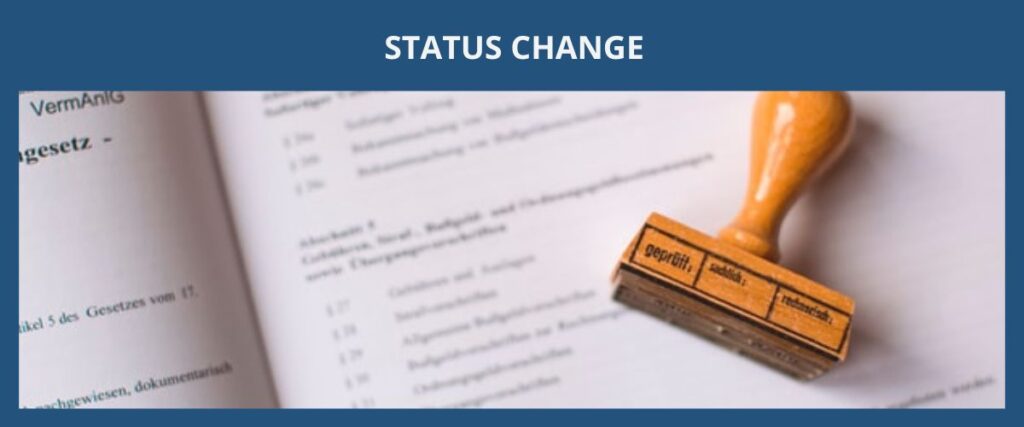
A change in employment under the P2 visa usually means (1) the P2 visa worker changes to a different employer, (2) the P2 visa worker works for more than one employer, (3) the P2 visa worker’s employment was involuntarily terminated, or (4) there was a material change in the P2 visa worker’s employment or visa eligibility.
Change in Employer
If the P2 visa worker changes to another U.S. employer (or U.S. agent, or U.S. agent for a foreign employer), a new P2 visa petition must be filed and the P2 visa worker cannot start working until the new P2 visa petition is approved.
Concurrent Employment
The P2 visa worker can work for more than one employer at the same time, however, all the employers would need to file for a separate P2 visa petition unless it is filed under a U.S. agent.
Amended Petition
Additional performances or engagements that are similar or comparable to what was listed in the original P2 visa petition can be allowed without filing an amended P2 visa petition, however, an amended P2 visa petition would be required if there is a material change in the terms and conditions of the P2 visa worker’s employment or visa eligibility.
Early Involuntary Termination
If the P2 visa worker’s employment was terminated involuntary (e.g., the P2 visa worker did not voluntarily resign) before their visa status expiration date, the sponsoring employer or agent would have an obligation to pay a reasonable transportation cost to the P2 visa worker to return to their last place of residence before coming to the United States.
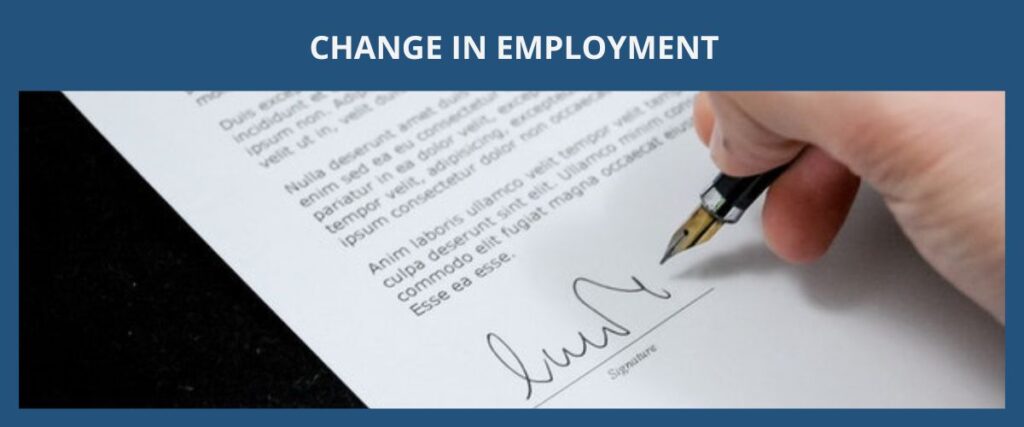
Dependent family members (spouse and unmarried children under 21 years old) of P2 visa workers are allowed to stay in the United States under the P4 visa status but they are not allowed to work. Studying is allowed for P4 visa holders.
Dual intent visas allow the foreign person to have both an intent to temporarily stay in the United States and an intent to permanently stay in the United States. The intention to permanently stay in the United States can be shown when the foreign person has a pending green card petition with the USCIS or an approved PERM labor certification from the U.S. Department of Labor.
Both P2 visas and P2S visas require the foreign person to maintain a residence (home address) overseas that they have no intention in abandoning, however, the P2 visa is a dual intent visa that allows the person to have a green card (permanent residency) petition pending while still being able to maintain and extend (renew) their P2 visa status in the United States.
In comparison, the P2S visa for the foreign support staff of P2 visa workers is not a dual intent visa which means the person is not allowed to have the intention of staying permanently in the United States. And thus a P2S visa worker having a pending green card petition will interfere with their eligibility to maintain and extend (or renew) their P2S visa status in the United States. For example, if a P2S visa holder leaves the United States after they have filed a green card petition (which is an intention of permanently staying in the United States) with the USCIS, it would be likely that they will not be allowed to back to the United States with their P2S visa because it is not a dual intent visa and only allows the foreign person to have an intention to temporarily stay in the United States.
The P2 visa is for artists and entertainers who will be working (individually or as part of a group) under a reciprocal exchange program between certain U.S. and foreign organizations. There are 5 active reciprocal exchange programs currently.
There are four main alternatives to the P2 visa petition (Artists Reciprocal Program): (1) the P3 visa for foreign artists who will be working (individually or as part of a group) under a culturally unique program, (2) the P1B visa petition for foreign artists who are performing as a part of an internationally recognized entertainment group, (3) the O1B visa petition for individual foreign artists who have extraordinary ability in the arts (i.e., the artist usually has national or international recognition), or (4) the O1B MPTV visa petition for individual foreign artists who have extraordinary achievements in the motion picture (movie) and television industry. Fashion models can file for the H1B3 visa petition.
Another possible alternative to filing a P2 visa petition would be to file for a green card petition which is a permanent immigrant visa and not a temporary work visa like the P2 visa. For more on green cards gained through work, please read the overview for employment-based green cards.
If you have a P2 work visa (Artists Reciprocal Exchange Program) immigration question, please fill out our contact us form or send us an email with some basic information about your background and your immigration needs. We will do our best to respond within 48 hours.
How we can help?
Kylie Huang Law’s immigration attorney will help identify whether the P2 visa is the appropriate nonimmigrant visa category for the client’s (or the client’s beneficiary’s) professional background and if there are other visa options for the client (or the client’s beneficiary). We will work closely with our client to prepare a convincing case for their (or it’s) P2 visa petition and we will also strategize on how the P2 visa petition should be presented to achieve the best chances of approval. It is strongly advised and common practice to retain an immigration attorney for a P2 work visa petition due to the complexities in the immigration process and visa requirements.
What does the typical process look like to retain (hire) us?
- Step 1:
- Step 2:
- Step 3:
- Step 4:
- Step 5:
- a.
- b.
- c.
- Step 6:
- Step 7:
- Step 8:
- Fill out the form (with some basic information on what your immigration needs are)
- Sign up and log into the client portal to schedule an appointment online
- Attend scheduled appointment (typically a phone call or zoom meeting)
- Retainment (signing a contract to hire us)
- Start processing case
- Gathering required documents
- Preparing paperwork
- Confirming contents of documents that will be submitted
- Filing the case
- Following up on the status of the case
- Close the case when a final determination is issued
- Step 1:
- Step 2:
- Step 3:
- Step 4:
- Step 5:
- a.
- b.
- c.
- Step 6:
- Step 7:
- Step 8:
- Fill out the form (on what your immigration needs are)
- Sign up and log into the client portal to schedule an appointment
- Attend scheduled appointment (typically a phone call or zoom)
- Retainment (signing a contract to hire us)
- Start processing case
- Gathering required documents
- Preparing paperwork
- Confirming contents of documents that will be submitted
- Filing the case
- Following up on the status of the case
- Close the case when a final determination is issued
- Step 1:
- Step 2:
- Step 3:
- Step 4:
- Step 5:
- a.
- b.
- c.
- Step 6:
- Step 7:
- Step 8:
- Fill out the form (on what your immigration needs are)
- Sign up and log into the client portal to schedule appointment
- Attend scheduled appointment (typically a phone call or zoom)
- Retainment (hire us)
- Start processing case
- Gathering required documents
- Preparing paperwork
- Confirming content of documents that will be submitted
- Filing the case
- Following up on the case status
- Close the case when a final determination is issued
RELATED ARTICLES
- P2 Visa Checklist (Reciprocal Exchange Program)
- P visa Overview (Athlete & Entertainer)
- P1A Visa Checklist (Athlete)
- P1A Visa (Internationally Recognized Athlete)
- P visa Overview (Athlete & Entertainer)
- P1B Visa (Member of Internationally Recognized Entertainment Group)
- P1B Visa Requirement & Documents
- P1B Visa Checklist (Entertainment Group)
- P3 Visa (Artist Culturally Unique Program)
- P3 Visa Checklist (Culturally Unique Program)
- P1S/P2S/P3S Visa (Essential Support Personnel)
- P1S/P2S/P3S Visa Checklist (Support Staff)
- O Visa Overview (Extraordinary Ability / Achievement)
- O1A Visa (Extraordinary Ability in Science, Education, Business, Athletics)
- O-1B Visa (Extraordinary Ability in Arts & Extraordinary Achievements in Motion Pictures or Television)
- O2 Visa (Essential Support Personnel)
- H Visa Overview
- H1B Visa (Specialty Occupations)
- L Visa Overview (Intra-company Transferee)
- R1 Visa (Religious Worker)
- E Visa Overview (Treaty Trader & Investor)
- TN Visa (NAFTA Professionals)
- Employment-Based Green Card Overview (LPR)

